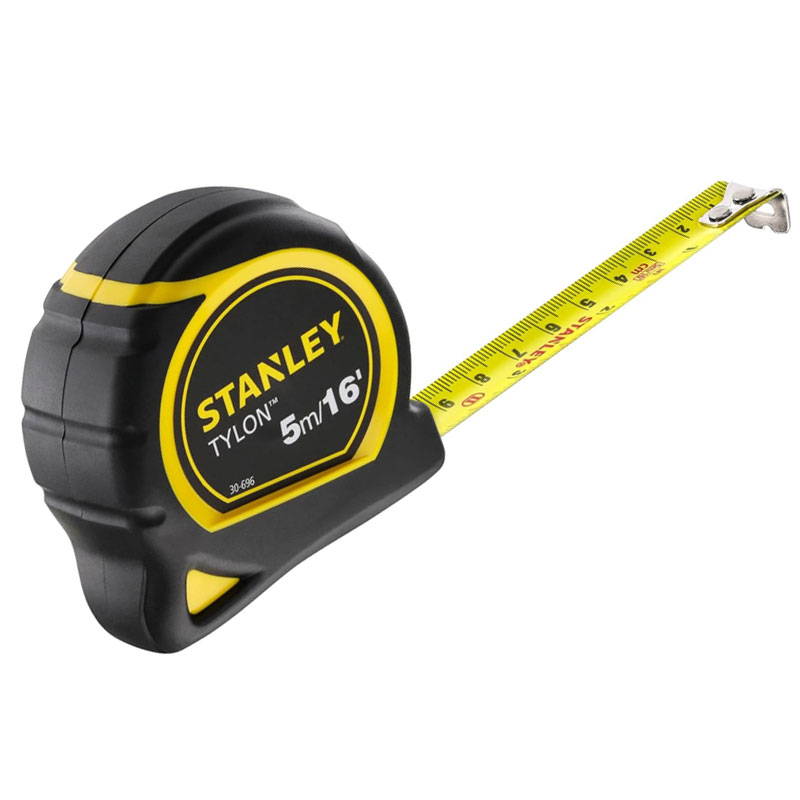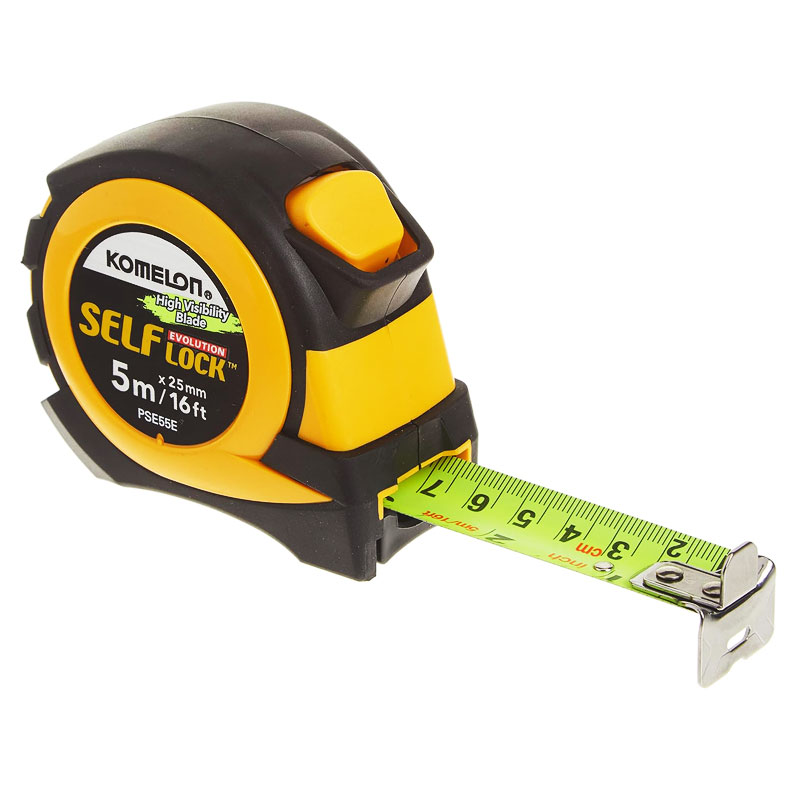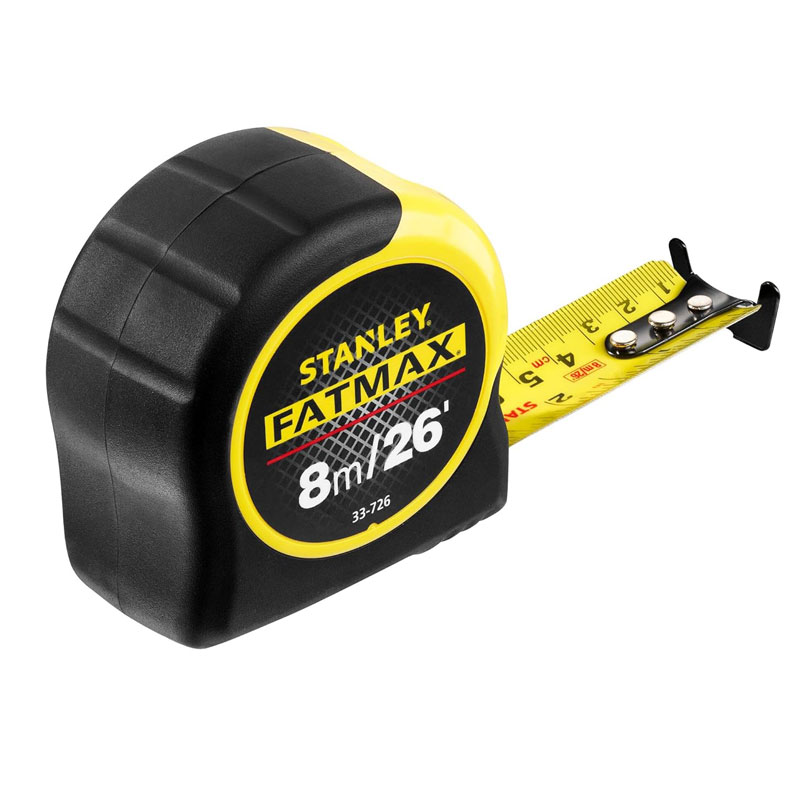What is the diamond on a tape measure used for? Our DIY expert explains all
Ever wondered what is the diamond on a tape measure used for? DIY expert, Steve Jenkins explains why it's on there and how you can benefit from using it
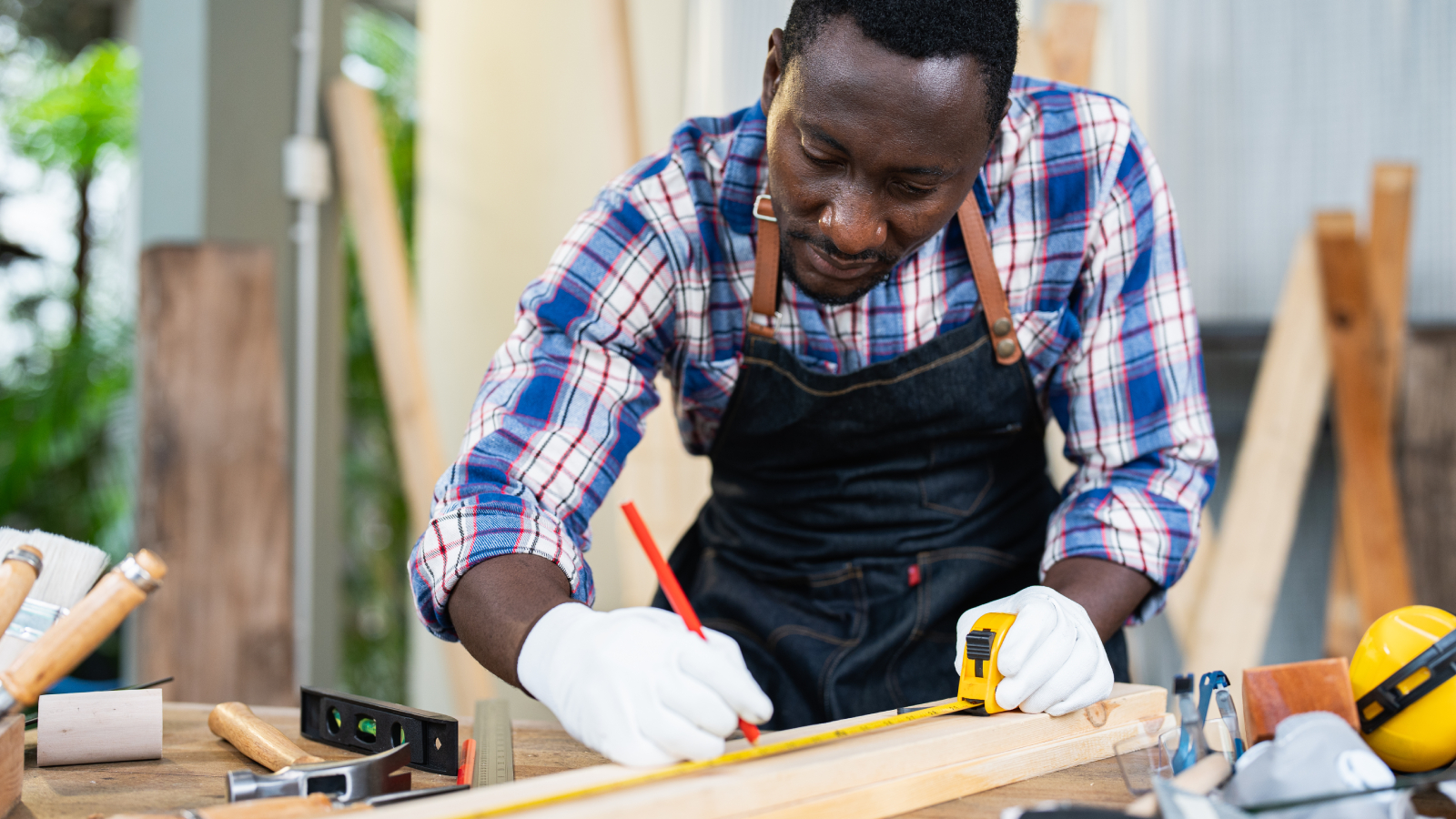
If you've ever wondered ‘What is the diamond on a tape measure used for?’ then our DIY expert, Steve Jenkins has the answers to your questions.
If you haven't noticed it, you'll generally find it sitting on the top edge of the modern day tape measure, and appearing at regular intervals on the imperial scale. But, to confuse matters slightly, it's worth noting that every tape measure isn't the same.
It can appear once at regular measurements, it might appear twice at a different set of intervals, or it might not appear at all.
Here we reveal what is the diamond on a tape measure, its purpose, where you can use it and how useful it can be.
What is the diamond on a tape measure used to denote?
On a UK tape measure, such as this DeWalt 5m tape measure the small black diamond or sometimes circle, is usually found every 19.2 inches along the tape. But, if your tape measure doesn't have a diamond or circle, don't take it back to the store - some simply don't feature them.
In simple terms, when explaining what is the diamond on a tape measure, the answer is that it is a joist mark, and the measurement points are in line with the general spacing of joists in UK structures.
But why is it at this particular measurement? A lot of boards, such as plywood are commonly sized in eight feet (96 inch) lengths and if you divide the length by five you get 19.2 inches, which works out as a good place for the centre of the joists to be positioned.
One word of caution, even if you now know what is the diamond on a tape measure used for, if for example, you are learning how to build a partition wall in the UK, the spacings are usually measured in millimetres, so you will still need to ensure you work to the correct measurement.
Bring your dream home to life with expert advice, how to guides and design inspiration. Sign up for our newsletter and get two free tickets to a Homebuilding & Renovating Show near you.
Why are there also red boxes at 16 inch intervals?
It's important to be aware of the fact that some tape measures also include a diamond at 16 inch intervals, as seen in the below image. This is because it's in line with the measurements typically used in the US, where 16 inches is the common distance between studs in a stud wall.
In some cases there may only be a red box (with number) marking the 16 inch gaps.
If you are building a stud wall in the UK the standard measurement for a stud wall gap, however, is 400mm. This is very close to 16 inches - 406mm - but obviously not the same. So if you are in the UK, these red boxes are best ignored.
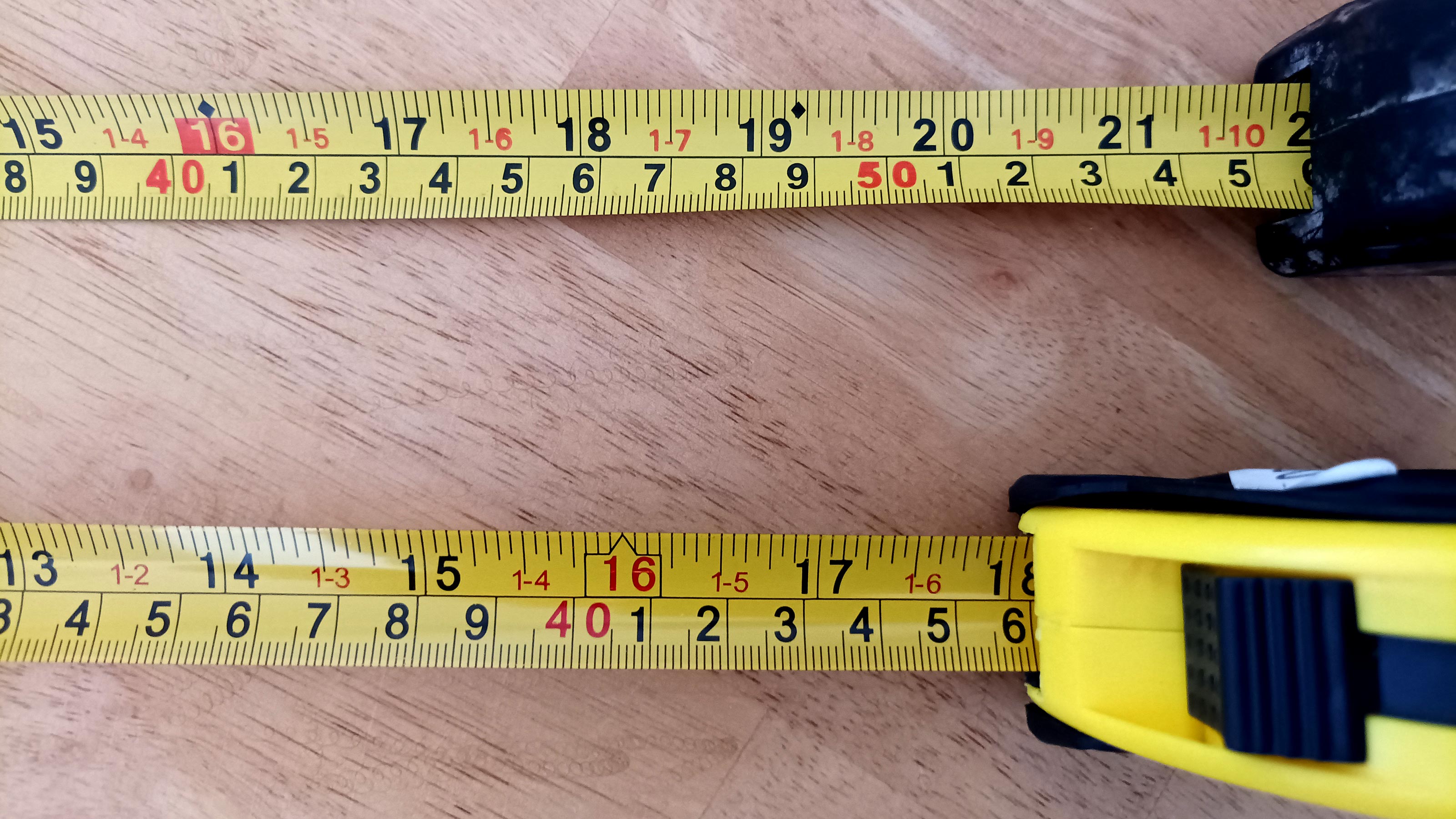
Try one of these quality tape measures for your next project
What does the metal end of a tape measure do?
The metal end on a tape measure – that is visible when the tape is fully retracted – is known as a hook. The obvious use is to hook it over the end of a surface and then pull out the tape measure to measure and mark.
Some tape measures have what is known as a nail grab as well, which is a little indent or hole to grab a nail or screw when needed. This is ideal when you need to measure from the centre of a joist or stud.
Some also have small teeth to scribe a mark if you don't have a pencil. If it doesn’t have teeth you can use the edge of the hook itself to make a mark.
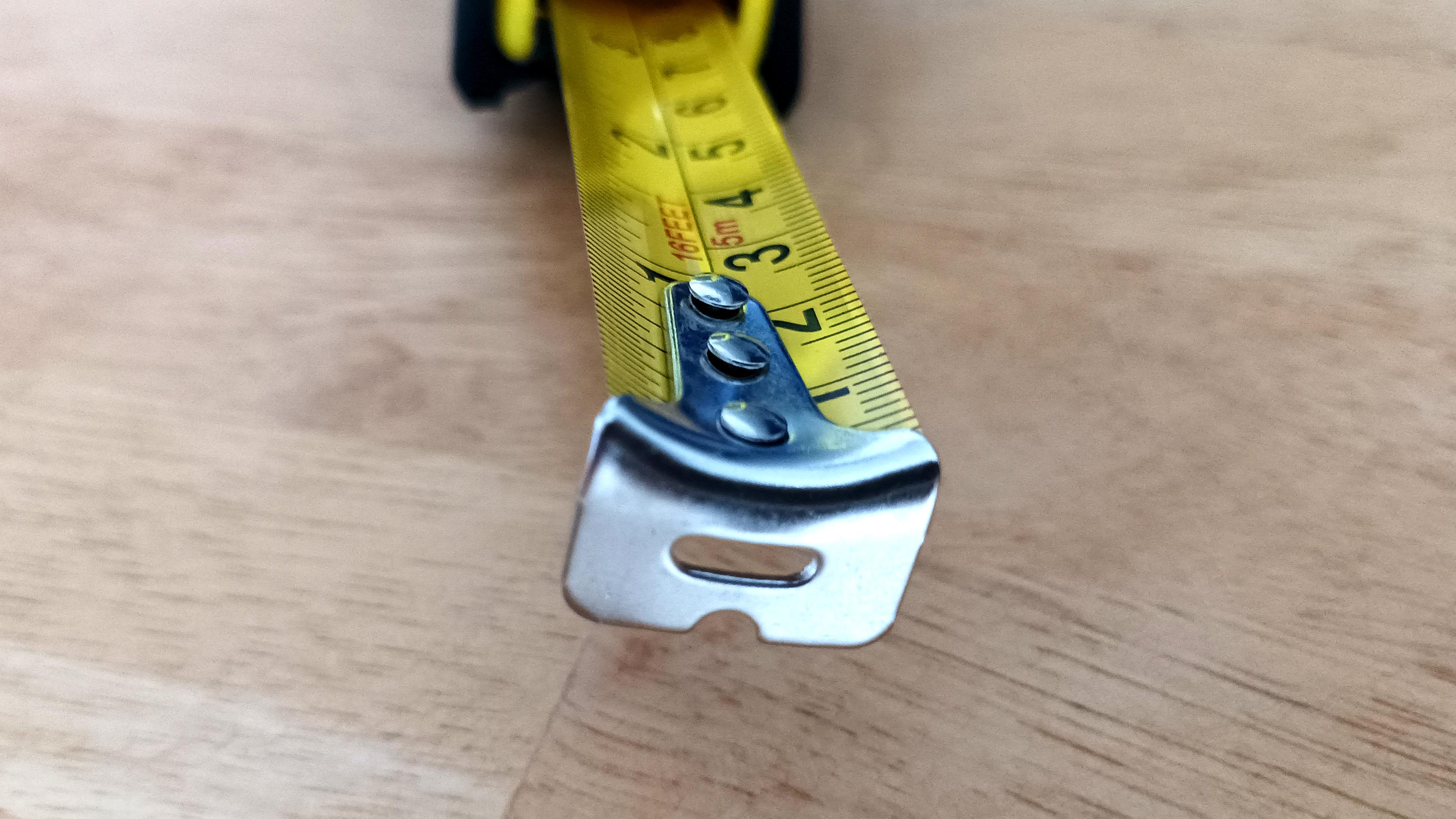
Why is the hook loose?
You have probably noticed that the hook on the end of your tape is a little loose. This is not a manufacturing error, it's meant to be like that.
The tape part of the measure is in fact made to be short by a sixteenth of an inch, which allows for the fact the width of the hook is this size - making it full length once added.
The reason it is slightly loose is so that you can get accurate readings when measuring both the inside and outside of a surface.
So, for example, if you have just finished painting windows and are measuring inside the window recess for blinds, when you push the hook up against the surface, it will push up against the tape to fill the sixteenth of an inch gap.
But, if measuring the outside of a surface, such measuring units when fitting a kitchen, the tape will pull out an extra sixteenth of an inch when hooked over the end in order to give you a precise measurement.
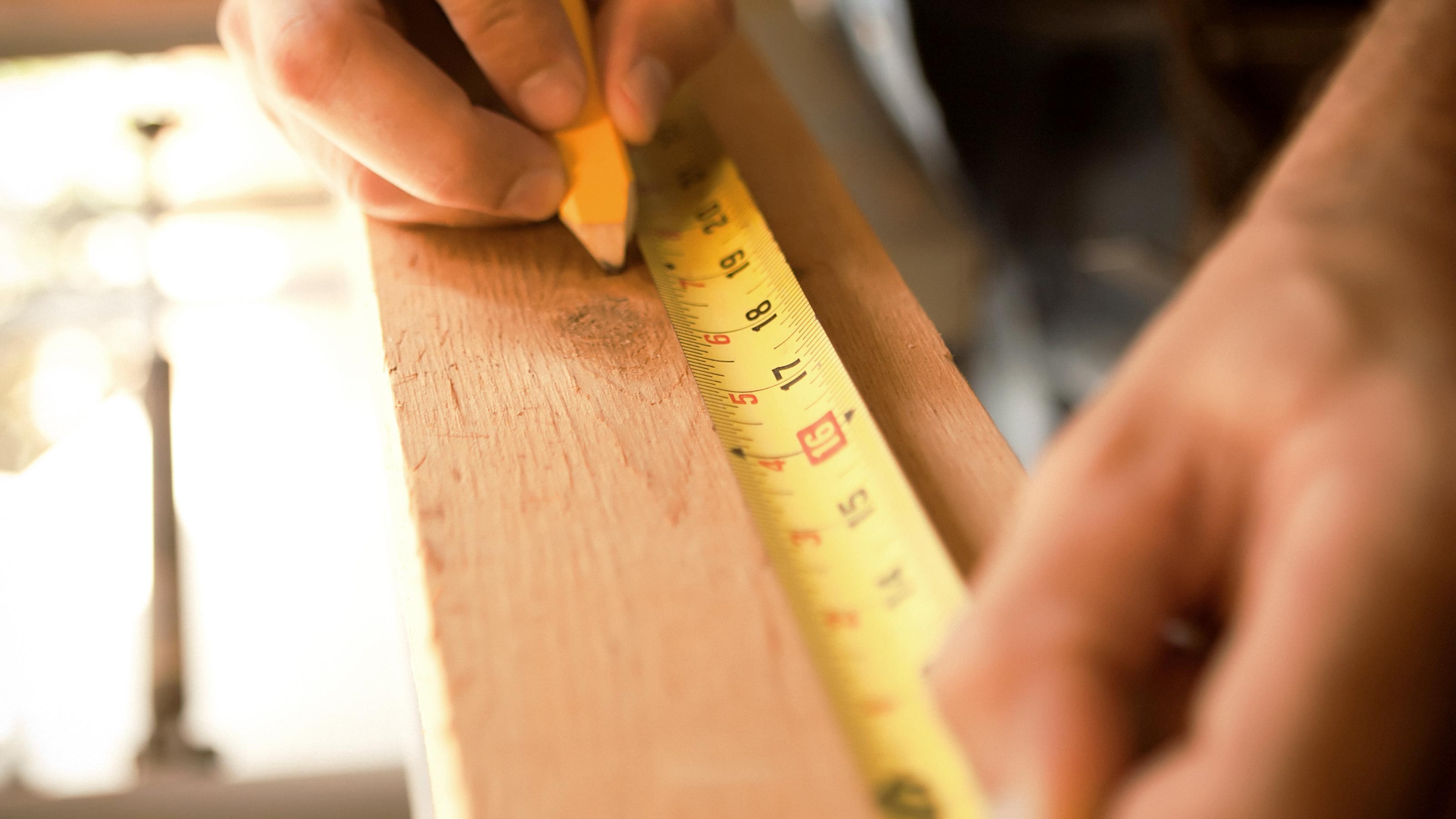
What other tape measure marks should I look out for?
As well as knowing what is the diamond on a tape measure, one mark common to all tape measures is the length. This will be placed at the front end of the tape so you can see it immediately and it is typically both in metres and feet.
A few other marks you can find on a tape measure generally denote quality. A CE mark tells you that the tape conforms to EU regulations. Roman numerals indicate accuracy, with level 1 being the best.
If your tape measure doesn’t have a CE mark it means it hasn’t been tested to conform to a certain level of accuracy. But most brand names will have them, and even tapes without them are still good enough for general DIY jobs such as tiling a wall.
A tape measure is an essential in any DIYers toolbox. You can use it to measure laminate flooring, build a stud wall with a door, cutting plasterboard and much more. But, your tools won't work if you don't take care of them, so make sure you follow our tape measure cheat sheet to help keep yours in tip top condition.
Or, perhaps you're wondering if you need to invest in the latest tech to guarantee greater accuracy. Find out what is a laser tape measure and if you could benefit from using one.
Steve Jenkins is a freelance content creator with over two decades of experience working in digital and print and was previously the DIY content editor for Homebuilding & Renovating.
He is a keen DIYer with over 20 years of experience in transforming and renovating the many homes he has lived in. He specialises in painting and decorating, but has a wide range of skills gleaned from working in the building trade for around 10 years and spending time at night school learning how to plaster and plumb.
He has fitted kitchens, tiled bathrooms and kitchens, laid many floors, built partition walls, plastered walls, plumbed in bathrooms, worked on loft conversions and much more. And when he's not sure how to tackle a DIY project he has a wide network of friends – including plumbers, gas engineers, tilers, carpenters, painters and decorators, electricians and builders – in the trade to call upon.
